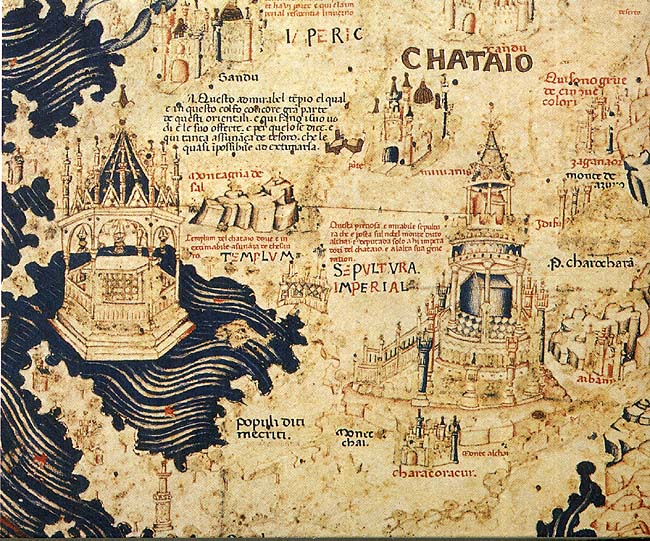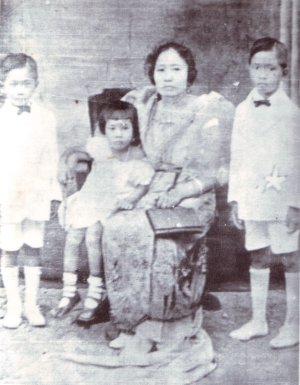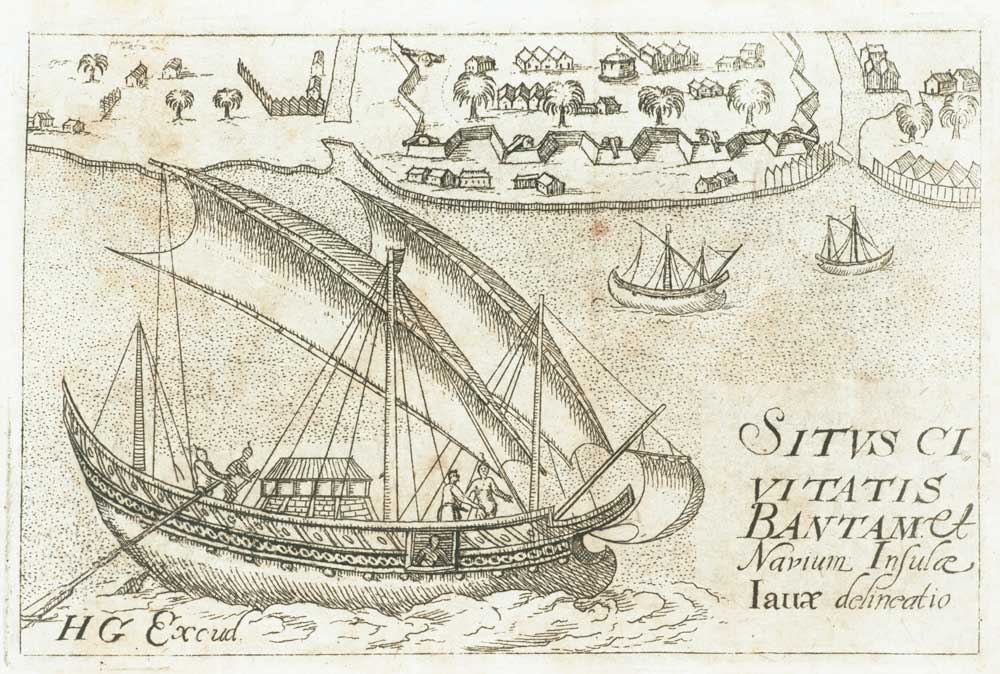|
Tawalisi
Tawalisi (ca. 1350 C.E–1400 C.E.) is a Southeast Asian kingdom described in the journals of Ibn Battuta. Guesses to the location of Tawalisi have included Java, Pangasinan, Luzon, Sulu, Celebes (Sulawesi), Cambodia, Cochin-China, the mainland Chinese province of Guangdong, and practically every island in South Asia beginning with ''ta''. In the Philippines, Pangasinan was considered to be the most-likely location of Tawalisi, but this has since been disputed. Ibn Battuta's description Thereafter, we reached the land of Tawalisi, it being their king who is called by that name. It is a vast country and its king is a rival of the king of China. He possesses many junks, with which he makes war on the Chinese until they come to terms with him on certain conditions. The inhabitants of this land are idolaters; they are handsome men and closely resemble the Turks in figure. Their skin is commonly of a reddish hue, and they are brave and warlike. Their women ride on horseback and are skill ... [...More Info...] [...Related Items...] OR: [Wikipedia] [Google] [Baidu] |
Urduja
Urduja was a legendary Women warriors in literature and culture, warrior princess recorded in the travel accounts of Ibn Battuta (1304 – possibly 1368 or 1377 AD). She was described to be a princess of ''Kaylukari'' in the land of ''Tawalisi''. Though the locations of ''Kaylukari'' and ''Tawalisi'' are disputed, in the Philippines Urduja is widely believed to be from Pangasinan, and has since been regarded as a national heroine. Ibn Battuta Ibn Battuta described Urduja as the ruler of ''Kaylukari'' in the land of ''Tawalisi'' and leader of the ''Kinalakian''. After reaching the Samudra Pasai, Samudra-Pasai Sultanate in what is now Sumatra, Indonesia, Ibn Battuta passed by Tawalisi on his way to Yuan dynasty, China. Princess Urduja was described as a daughter of a ruler named Tawalisi of a land that was also called Tawalisi. The ruler of Tawalisi, according to Ibn Battuta, possessed many ships and was a rival of China, which was then ruled by a Mongol dynasty. Ibn Battuta sailed f ... [...More Info...] [...Related Items...] OR: [Wikipedia] [Google] [Baidu] |
Ibn Battuta
Abu Abdullah Muhammad ibn Battutah (, ; 24 February 13041368/1369),; fully: ; Arabic: commonly known as Ibn Battuta, was a Berbers, Berber Maghrebi people, Maghrebi scholar and explorer who travelled extensively in the lands of Afro-Eurasia, largely in the Muslim world. He travelled more than any other explorer in pre-modern history, totalling around , surpassing Zheng He with about and Marco Polo with . Over a period of thirty years, Ibn Battuta visited most of southern Eurasia, including Central Asia, Southeast Asia, South Asia, China, and the Iberian Peninsula. Near the end of his life, he dictated an account of his journeys, titled ''A Gift to Those Who Contemplate the Wonders of Cities and the Marvels of Travelling'', but commonly known as ''The Rihla''. Name Ibn Battuta is a patronymic literally meaning "son of the duckling". His most common full name is given as Kunya (Arabic), Abu Abdullah (name), Abdullah Muhammad (name), Muhammad ibn Battuta. In his travel literat ... [...More Info...] [...Related Items...] OR: [Wikipedia] [Google] [Baidu] |
Cathay
Cathay (; ) is a historical name for China that was used in Europe. During the early modern period, the term ''Cathay'' initially evolved as a term referring to what is now Northern China, completely separate and distinct from China, which was a reference to southern China. As knowledge of East Asia increased, Cathay came to be seen as the same polity as China as a whole. The term ''Cathay'' became a poetic name for China. The name ''Cathay'' originates from the word '' Khitan'', a name of a para-Mongolic nomadic people who ruled the Liao dynasty in northern China from 916 to 1125, and who later migrated west after they were overthrown by the Jin dynasty to form the Qara Khitai (Western Liao dynasty) for another century thereafter. Originally, this name was the name applied by Central and Western Asians and Europeans to northern China; the name was also used in Marco Polo's book on his travels in Yuan dynasty China (he referred to southern China as '' Mangi''). Odoric of ... [...More Info...] [...Related Items...] OR: [Wikipedia] [Google] [Baidu] |
Ferdinand Marcos
Ferdinand Emmanuel Edralin Marcos Sr. ( , , ; September 11, 1917–September 28, 1989) was a Filipino politician, lawyer, dictator, and kleptocrat who was the 10th president of the Philippines from 1965 to 1986. He ruled under martial law from 1972 until 1981 p. 189. and kept most of his martial law powers until he was deposed in 1986, branding his rule as "constitutional authoritarianism" under his Kilusang Bagong Lipunan (New Society Movement). One of the most controversial leaders of the 20th century, Marcos's rule was infamous for its corruption, extravagance, and brutality. Marcos gained political success by claiming to have been the "most decorated war hero in the Philippines", but many of his claims have been found to be false, with United States Army documents describing his wartime claims as "fraudulent" and "absurd". After World War II, he became a lawyer then served in the Philippine House of Representatives from 1949 to 1959 and the Philippine Senate from 195 ... [...More Info...] [...Related Items...] OR: [Wikipedia] [Google] [Baidu] |
William Henry Scott (historian)
William Henry Scott (July 10, 1921 – October 4, 1993) was a historian of the Gran Cordillera Central and Prehispanic Philippines. His family, of Dutch-Lutheran descent, soon returned to Bethlehem, Pennsylvania, where Scott spent his boyhood.Peralta, Jesus T, editor (2001) p.16 In 1936, Scott won a three-year scholarship to the Episcopalian-affiliated Cranbrook School in Michigan, United States, where he excelled academically and became interested in pursuing a career as an archeologist. In 1939, after graduating, he changed his name to William Henry Scott. In 1942, Scott joined the US Navy, serving throughout World War II until 1946. Professional career In 1946, Scott joined the Episcopal Church mission in China. He taught and studied in Shanghai, Yangchow and Beijing until 1949. With the general expulsion of foreigners from China in 1949, he followed some of his teachers to Yale University where he enrolled, graduating in 1951 with a BA in Chinese language and literat ... [...More Info...] [...Related Items...] OR: [Wikipedia] [Google] [Baidu] |
National Historical Commission Of The Philippines
The National Historical Commission of the Philippines ( fil, Pambansang Komisyong Pangkasaysayan ng Pilipinas, abbreviated NHCP) is a government agency of the Philippines. Its mission is "the promotion of Philippine history and cultural heritage through research, dissemination, conservation, sites management and heraldry works." As such, it "aims to inculcate awareness and appreciation of the noble deeds and ideals of our heroes and other illustrious Filipinos, to instill pride in the Filipino people and to rekindle the Filipino spirit through the lessons of history." History The present day NHCP was established in 1972 as part of the reorganization of government after President Ferdinand Marcos' declaration of martial law, but the roots of the institute can be traced back to 1933, when the American colonial Insular Government first established the Philippine Historical Research and Markers Committee (PHRMC). Philippine Historical Research and Markers Committee (1933) The P ... [...More Info...] [...Related Items...] OR: [Wikipedia] [Google] [Baidu] |
Kalantiaw
Datu Kalantiaw (Rajah Bendahara Kalantiaw) (sometimes spelled Kalantiao) was once considered an important part of Philippine history as the one who created the first legal code in the Philippines, known as the Code of Kalantiaw in 1433. He was considered by Filipinos, particularly the Visayans, as the third head of Panay (an island in Visayas with four provinces: Aklan, Antique, Capiz and Iloilo). He was a source of fierce Filipino and Visayan pride for decades, until his authenticity was debunked by Historian William Henry Scott in his PhD thesis, ''Critical Study of the Prehispanic Source Materials for the Study of Philippine History'' relegating the once legendary historical figure into a mythical Filipino character or an urban legend. History Kalantiaw's name first appeared in print in July 1913 in an article entitled "Civilización prehispana" published in the Philippine news-magazine ''Renacimiento Filipino''. The article mentioned 16 laws enacted by King Kalantiaw in 14 ... [...More Info...] [...Related Items...] OR: [Wikipedia] [Google] [Baidu] |
Javanese Junk
The djong, jong, or jung (also called junk in English) is a type of ancient sailing ship originating from Java, Indonesia that was widely used by Javanese, Sundanese, and later Malay sailors. The word was and is spelled ''jong'' in its languages of origin, the "djong" spelling being the colonial Dutch romanization. Djongs are used mainly as seagoing passenger and cargo vessels. They traveled as far as the Atlantic Ocean in the medieval era.Carta IX, 1 April 1512. In Pato, Raymundo Antonio de Bulhão; Mendonça, Henrique Lopes de (1884). Cartas de Affonso de Albuquerque, Seguidas de Documentos que as Elucidam tomo I' (pp. 29–65). Lisboa: Typographia da Academia Real das Sciencas. Their tonnage ranged from 40 to 2000 deadweight tons,The tonnage used in this page (unless stated otherwise) is DWT or deadweight tonnage, a measure of how much cargo a ship can carry, including the weight of passenger and supplies. with an average deadweight of 1200–1400 tons during the Majapahit ... [...More Info...] [...Related Items...] OR: [Wikipedia] [Google] [Baidu] |
Kediri Kingdom
Kediri Kingdom (also known as Panjalu) Javanese script : ꧋ꦥŋꦗꦭꦸ, was a ''Hindu-Buddhist'' Javanese Kingdom based in East Java from 1042 to around 1222. This kingdom is centered in the ancient city ''Dahanapura'', despite the lack of archaeological remains, the age of Kediri saw much development in classical literature. Mpu Sedah's ''Kakawin Bharatayuddha'', Mpu Panuluh's ''Gatotkacasraya'', and Mpu Dharmaja's ''Smaradhana'' blossomed in this era. The kingdom's capital is believed to have been established in the western part of the Brantas River valley, somewhere near modern Kediri city and surrounding Kediri Regency. Etymology and names Actually, the city of Daha existed before the division of the kingdom. Daha is an abbreviation of ''Dahanapura'', which means ''city of fire''. This name is listed in the Pamwatan inscription issued by Airlangga in 1042. This is in accordance with the news in '' Serat Calon Arang'', that at the end of Airlangga's reign, the center ... [...More Info...] [...Related Items...] OR: [Wikipedia] [Google] [Baidu] |
Majapahit
Majapahit ( jv, ꦩꦗꦥꦲꦶꦠ꧀; ), also known as Wilwatikta ( jv, ꦮꦶꦭ꧀ꦮꦠꦶꦏ꧀ꦠ; ), was a Javanese people, Javanese Hinduism, Hindu-Buddhism, Buddhist thalassocracy, thalassocratic empire in Southeast Asia that was based on the island of Java (in modern-day Indonesia). It existed from 1293 to circa 1527 and reached its peak of glory during the era of Hayam Wuruk, whose reign from 1350 to 1389 was marked by conquests that extended throughout Southeast Asia. His achievement is also credited to his prime minister, Gajah Mada. According to the () written in 1365, Majapahit was an empire of 98 tributaries, stretching from Sumatra to New Guinea; consisting of present-day Indonesia, Singapore, Malaysia, Brunei, southern Thailand, Timor Leste, southwestern Philippines (in particular the Sulu Archipelago) although the scope of Majapahit sphere of influence is still the subject of debate among historians. The nature of Majapahit relations and influences upon its ... [...More Info...] [...Related Items...] OR: [Wikipedia] [Google] [Baidu] |
Odoric Of Pordenone
Odoric of Pordenone, OFM (1286–1331), also known as Odorico Mattiussi/Mattiuzzi, Odoricus of Friuli or Orderic of Pordenone, was an Italian late-medieval Franciscan friar and missionary explorer. He traveled through India, the Greater Sunda Islands, and China, where he spent three years in Beijing. After his death, he became an object of popular devotion and was beatified in 1755. Odoric wrote a narrative of his travels, which has been preserved in Latin, French, and Italian manuscripts. It includes accurate descriptions of Asian social and religious customs. His account was an important source for the account of John Mandeville. Many of the incredible reports in Mandeville have proven to be garbled versions of Odoric's eyewitness descriptions. Life Odoric was born at Villanova, a hamlet now belonging to the town of Pordenone in Friuli, in or about 1286. He came from the Italian family of the Mattiussi, one of the families in charge of defending the town of Pordenone in th ... [...More Info...] [...Related Items...] OR: [Wikipedia] [Google] [Baidu] |
Java
Java (; id, Jawa, ; jv, ꦗꦮ; su, ) is one of the Greater Sunda Islands in Indonesia. It is bordered by the Indian Ocean to the south and the Java Sea to the north. With a population of 151.6 million people, Java is the world's List of islands by population, most populous island, home to approximately 56% of the Demographics of Indonesia, Indonesian population. Indonesia's capital city, Jakarta, is on Java's northwestern coast. Many of the best known events in Indonesian history took place on Java. It was the centre of powerful Hindu-Buddhist empires, the Islamic sultanates, and the core of the colonial Dutch East Indies. Java was also the center of the History of Indonesia, Indonesian struggle for independence during the 1930s and 1940s. Java dominates Indonesia politically, economically and culturally. Four of Indonesia's eight UNESCO world heritage sites are located in Java: Ujung Kulon National Park, Borobudur Temple, Prambanan Temple, and Sangiran Early Man Site. ... [...More Info...] [...Related Items...] OR: [Wikipedia] [Google] [Baidu] |







.jpg)
